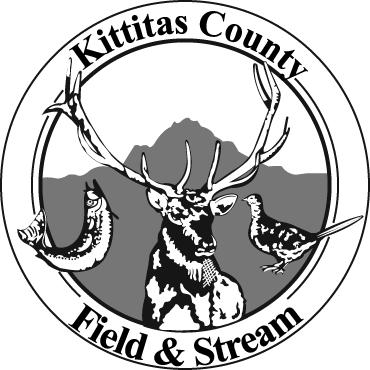For some reason – I think traceable to Rimrock Lake and Ron Nelson – summer always feels like time for kokanee fishing and consideration of life priorities. I have caught kokes (those little landlocked sockeye with the brilliant red and delicious flesh) in a couple states and several lakes, but got hooked, so to speak, 60 years ago on Rimrock.
My folks had split the sheets and my brothers and mom and I had moved from East Wenatchee to Yakima. September of 1958; my junior year of high school. Jackie was beautiful, with a stable, loving and outdoor family. Her father, Ron, was a fisherman and hunter with a cabin on Rimrock Lake…and a water‑skiing boat we could use anytime.
On school mornings, I’d get to Naches (where I was attending high school), have breakfast with the family, then walk to school with Jackie. I always felt welcome, and had liked Ron the moment we met. A funny guy, he always had a crack about how my early morning appearances overflowed his cup of life. I loved my time with them. I never thought about the impact they might have on a lost kid who had headed outdoors on his first legs.
That same fall, Ron had invited his brother Bob out from the East to find work. Times were tough, but Ron figured Bob might bloom out here, even though jobs were very scarce nationwide. I watched Bob start day after day of looking for work. Each morning, THIS would be he day. He was the most optimistic man I’d ever met. He was a hunter.
After weeks, Bob found a perfect job and sent for his wife and kids. Shortly thereafter, he told his new boss he needed a week or two off to go deer hunting with his brother Ron. The owner/boss told him he was the best machinist he’d ever hired, but no time off yet. At a very quiet breakfast just after that, Bob was musing about the tough year he and his family had just come through, and said something like, “I don’t see why he couldn’t let me go. I didn’t ask for pay, just time off. Told him I’d hafta quit, then, ‘cause I always go deer hunting. And now, for the first time in many years, I can hunt with my brother. I don’t know… It seems a damned shame to quit a good job just to go deer hunting.” But quit he did. After the hunt, there was a note from the aging boss, who said he had to know if Bob was truly a man of his word. A very few years later, Bob owned the company. That whole thing changed forever the way I look at priorities.
Anyhow, the following spring, Ron took it upon himself to teach me about kokanee catching and eating. It didn=t escape me, either, that I was captive in his boat. He was teaching me about life, and making sure I understood that my 17-year-old hormones were to stay in check.
On a given Saturday morning, we might catch a couple dozen eight- to twelve-inch kokes. I always cleaned the fish (necessary, Ron explained, because he had to concentrate so deeply to find just the right size aspen limbs, and properly fire up the smoker. When the smoke-cooked kokanee were just right, we would invite the women out to share the bounty of sweet red-fleshed kokes. To this day, I’ve eaten no better, nor in finer company.
By that fall, mom had moved us to Boise. Jackie and I corresponded for a time, but destiny had other plans. Some years later, I wrote Ron, thanking him for taking me in the way he did. In 1995, I learned that he was catching kokes in some clear, cold lake in the sky. Last I heard, Jackie and her family were in the lower valley.
I guess we have to set outdoor priorities for ourselves, but kokanee fishing is readily available to all of us through fall. Most folks talk about Chelan, Rimrock, Banks Lake, Sammamish and Lake Roosevelt, but Kachess, Keechelus, Cooper and Lost Lake have them , too. And Rimrock is not that far down the road. It’s pretty simple fishing really.
Trolling, still fishing, and jigging are all good ways to catch these most delicious fish, ranging in size from eight to 20 inches, depending on food and water. Most trollers use strings of blades or dodgers ahead of spoons or spinners with silver, red, or orange. Still fishers often use size eight to 12 hooks tipped with juicy maggots, kernel corn, or pieces of worm. The jigging method works over a school of kokes, with a ¼ oz. to 1 oz. jig.
For a list of waters, instructions, a pretty good video and general information about kokanees in Washington, check out wdfw.wa.gov/fishing/washington/Species/9008/. Google “kokanee fishing in Washington” and find everything else you need to know.
Happy koke fishing. Happy eating. Happy summer.




